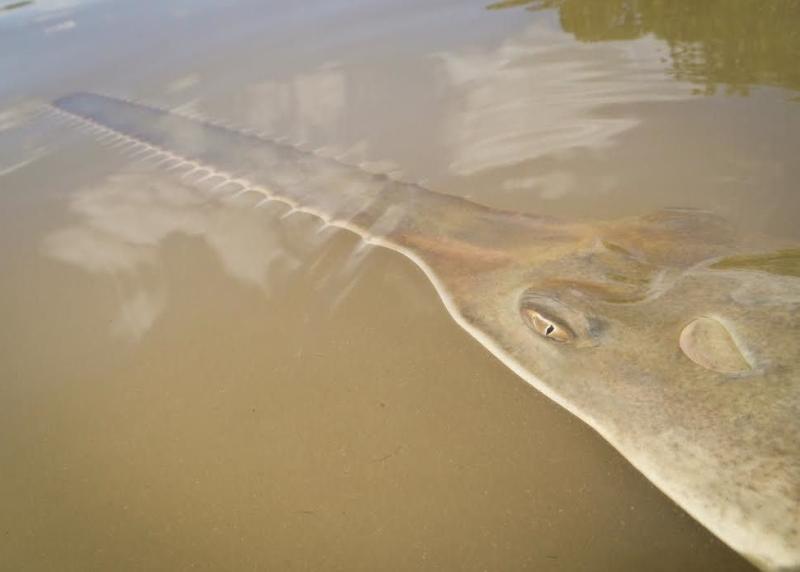A federal agency is taking emergency action after droves of fish exhibiting strange behavior turned up dead on South Florida shores.
Reports of this "abnormal fish behavior" state fish in the Lower Florida Keys are "spinning and whirling," according to the Florida Fish and Wildlife Conservation Commission. And while scientists remain perplexed as to why, what's particularly concerning them is the series of smalltooth sawfish deaths that could be related to the event, prompting the National Oceanic and Atmospheric Administration to get involved.
Since March 24, at least 109 of the endangered fish have been affected and more than 28 have died, with some exhibiting the whirling behavior before their death, FWC said. However, NOAA Fisheries sawfish recovery coordinator Adam Brame says the total mortality number is likely greater because the sawfishes are unlikely to float after death.
To date, fish necropsy data shows no signs of a communicable pathogen or bacterial infection as the root of the strange behaviors or deaths, FWC said. Water temperature, salinity, pH and dissolved oxygen are also not suspected to be involved.
But as efforts to nail down the issue continue — including the collection of water and tissue samples and the carcasses of the dead sawfish — NOAA isn't waiting around for answers.
Next week, the agency's Fisheries division is initiating an emergency response effort to rescue and rehabilitate the smalltooth sawfish before there are additional deaths, it said. This is the first time an effort to save the fish from the wild has been undertaken in the country, and NOAA is expecting the process, assisted by FWC and local partners, to be complex.
"It's important to note that active rescue and rehabilitation are not always effective in saving stranded animals. However, it can still give us critical information to learn about the nature of the distress," Brame said. "We're hopeful for positive outcomes from these rescue attempts and grateful to our partners for their support as we work to protect this endangered species."

Known for its long, flat and teeth-edged snout — resembling a saw, hence the name — the smalltooth sawfish is one of five species of sawfish belonging to the ray family of fish, NOAA says. The up to 16-foot-long creatures live in tropical areas and estuaries — "semi-enclosed areas where rivers meet the sea," per NOAA — and in the U.S., they can typically be found in Florida's coastal waters, making shallow areas their home.
But habitat loss caused by coastal development and accidental fish capture led NOAA Fisheries to list the smalltooth sawfish as an endangered species in 2003, making it the first marine fish to receive federal protection, according to the agency. Some of the sawfish live in designated critical habitats, while others in the wild will now be rehoused until scientists can resolve the issue plaguing their native waters.
According to NOAA Fisheries, some of the affected fish will head to Ripley's Aquariums, while others will go to Mote Marine Laboratory or Dynasty Marine Associates, Inc. The goal is to release all the rescued sawfish back to the wild once the research and rehabilitation process is complete, Brame said.
To help in its investigation, FWC is asking Florida residents to look out for any abnormal fish behavior or signs of any sawfish. You can submit a fish kill report on the commission's website or send an email at sawfish@myfwc.com.
Trending stories at Scrippsnews.com


